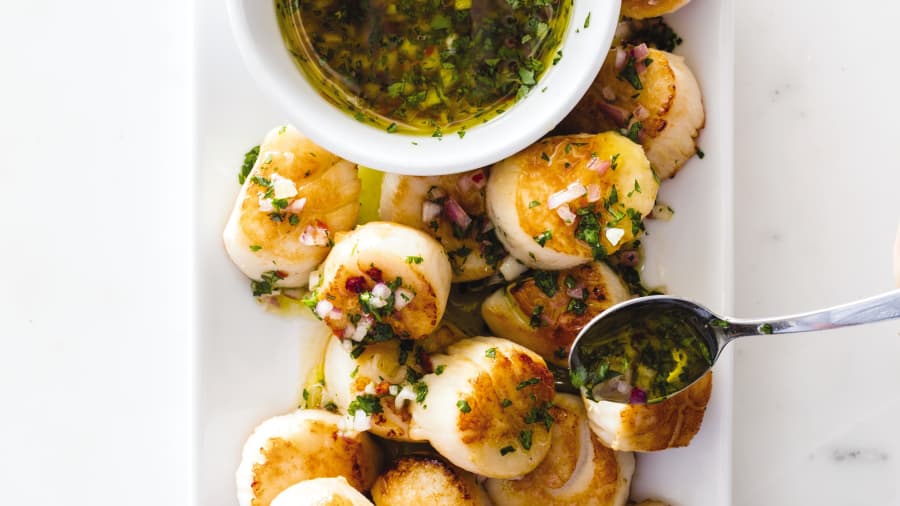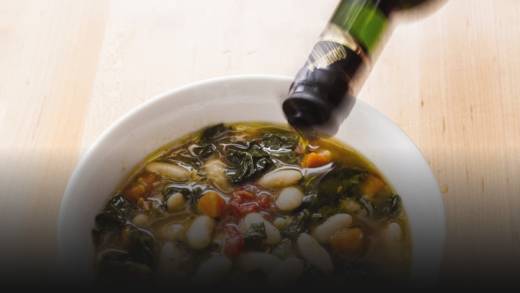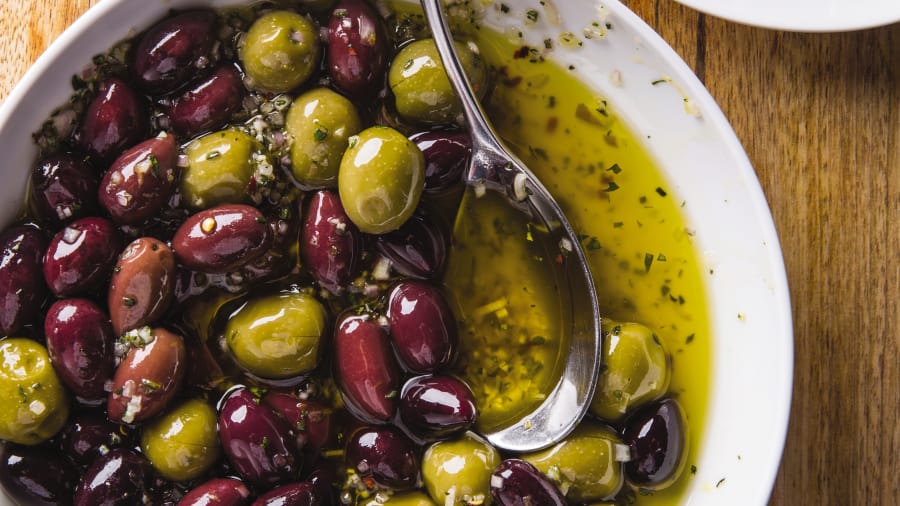Olive oil, which is simply juice pressed from olives, has been an important part of Mediterranean cooking for thousands of years. The highest grade, called extra-virgin, is lively, bright, and full- bodied, with flavors ranging from peppery to buttery depending on the varieties of olives used and how ripe they were when harvested. In the Mediterranean, Spain is the leading producer of olive oil, followed by Italy and Greece. In the United States, California is the top producer (and in fact is the source of our winning supermarket extra-virgin olive oil).
Olive Oil is Healthy
We use extra-virgin olive oil (EVOO) as our main cooking oil as well as in raw applications. Olive oil supports one of the main pillars of the Mediterranean Diet Pyramid: to eat more healthy fats and fewer saturated fats. It is high in monounsaturated fatty acids, which are healthy fats, and also contains important minor components including antioxidants and other beneficial phytochemicals, plant-derived compounds thought to protect against disease. Studies have also shown that people who regularly include olive oil in their diets have lower rates of heart disease, lower blood pressure, and reduced rates of diabetes and some cancers.
The Fresher the Olive Oil, the Better
Olive oil tastes great when it’s fresh. But olives are highly perishable, and their complex flavor degrades quickly, which makes producing—and handling—a top-notch oil time-sensitive, labor-intensive, and expensive.

It’s OK to Cook with Extra-Virgin Olive Oil
Although conventional wisdom says that you shouldn’t cook with olive oil since its smoke point is low, we have found that this is not the case. With a smoke point of 410 degrees, extra-virgin olive oil is fine for most cooking applications, even frying. However, we don’t usually use olive oil for frying because it is not economical to use in large quantities.
Olive Oil is Versatile
Extra-virgin olive oil is of course a starring player in salad dressings, but we also use it as a condiment on vegetables, pastas, bean dishes, and grilled fish, and as a source of richness and body in soups and sauces. Since olive oil is a pricey purchase, we use what we term “supermarket” extra-virgin olive oil for everyday cooked applications and save the most flavorful “high-end” EVOO for drizzling.

How to Buy Olive Oil
Buying extra-virgin olive oil in American supermarkets can be a tricky business. The standards of the International Olive Council (IOC), the industry’s worldwide governing body, are not enforced in the U.S., and a widely reported 2010 study from the Olive Center at the University of California, Davis, revealed that 69 percent of tested supermarket olive oils sold as “extra-virgin” were actually lesser grades being passed off at premium prices.

